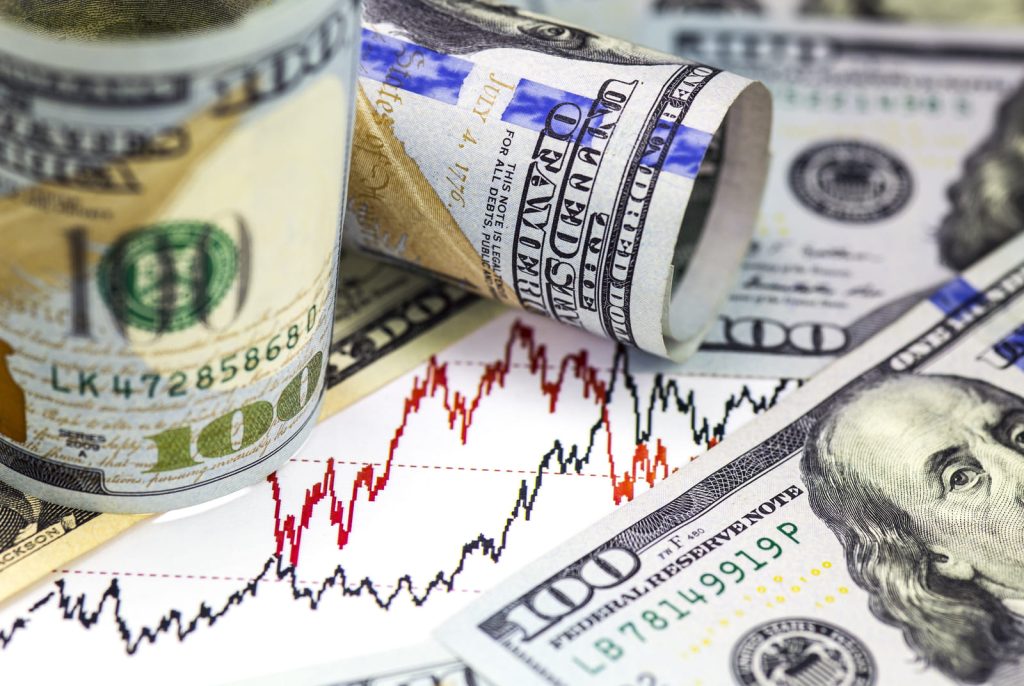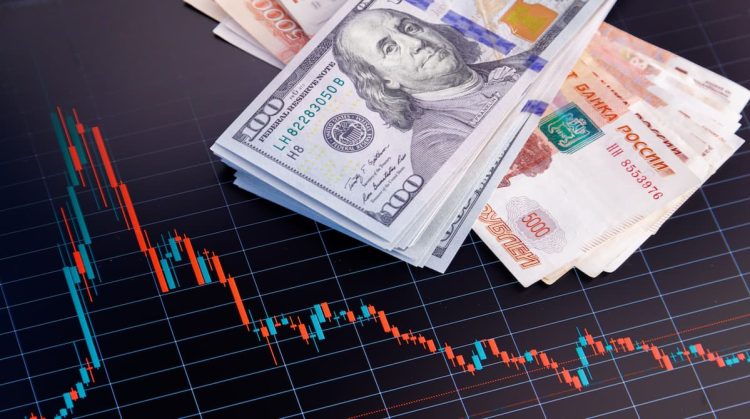Introduction: The Global Impact of a Strengthening Dollar
The U.S. dollar has long been the dominant currency in global trade and finance, serving as the benchmark for international transactions and a safe haven in times of economic uncertainty. Over the past few years, the dollar has strengthened considerably against a basket of other major currencies, fueled by several factors including rising U.S. interest rates, robust economic data, and a flight to safety amid global market volatility.
While a strong dollar is beneficial for U.S. consumers and investors, its strength can have far-reaching consequences for economies around the world, particularly in emerging markets. As the dollar rises, it brings with it a unique set of challenges, including rising debt burdens, weaker local currencies, and the potential for reduced global demand.
In this article, we will explore whether the continued appreciation of the dollar could overwhelm the global economy, particularly focusing on the risks faced by emerging markets, which are often the most vulnerable to fluctuations in the dollar’s value. We will also examine the underlying reasons for the dollar’s strength and the key factors that could influence its future path.
Chapter 1: The Strengthening Dollar and Its Causes
Factors Driving the Dollar’s Rise
The U.S. dollar has seen substantial appreciation in recent times, driven by a variety of economic factors:
- U.S. Interest Rate Hikes: The Federal Reserve’s decision to raise interest rates to combat inflation has made the U.S. dollar more attractive to investors. Higher interest rates mean higher yields on U.S. assets, such as Treasury bonds, which attract foreign capital. This influx of capital strengthens demand for the dollar, leading to its appreciation.
- Global Inflation Concerns: As inflation spikes worldwide, many central banks are forced to raise their own interest rates, but the Federal Reserve’s aggressive actions have led to an even stronger differential between U.S. and global rates. As investors move capital into the U.S. to capitalize on higher returns, the dollar’s strength continues to rise.
- Flight to Safety: During times of global uncertainty, such as geopolitical tensions or economic downturns, investors tend to flock to the U.S. dollar as a safe-haven asset. The dollar’s status as the world’s reserve currency provides a level of stability that many investors see as critical during uncertain periods.
- Economic Resilience in the U.S.: The resilience of the U.S. economy, particularly its recovery from the COVID-19 pandemic and its comparatively strong labor market and consumer spending, has supported the dollar. The perception that the U.S. is better positioned to handle global challenges has bolstered confidence in its currency.
Global Impact of a Strong Dollar
The rise of the dollar has both positive and negative effects, depending on the perspective of different economic actors. For the U.S. itself, a stronger dollar reduces the cost of imports and improves the purchasing power of American consumers abroad. However, the global consequences are more complicated.
- Weaker Foreign Currencies: A stronger dollar puts pressure on foreign currencies, particularly those in emerging markets. Countries that have significant debt denominated in dollars will face higher repayment costs as their own currencies depreciate against the dollar. This could lead to inflation, reduced purchasing power, and financial instability.
- Lower Commodity Prices: Many global commodities, such as oil and gold, are priced in U.S. dollars. As the dollar strengthens, these commodities become more expensive for countries using other currencies, potentially reducing demand and triggering a global slowdown in industries dependent on these materials.
Chapter 2: The Risks Facing Emerging Markets
Emerging markets (EMs) are particularly vulnerable to fluctuations in the U.S. dollar. While they represent a significant portion of global economic growth, they face unique risks when the dollar strengthens. These risks can manifest in various ways, potentially creating a financial crisis in some countries. Let’s explore the key challenges that emerging markets face in a rising dollar environment:
1. Rising Debt Burdens
Many emerging market countries have accumulated significant amounts of debt in U.S. dollars. As the dollar strengthens, the cost of servicing these debts rises, creating a strain on national budgets. These countries may face higher interest payments on their foreign debt, reducing their ability to invest in critical infrastructure or social programs.
- Debt-to-GDP Ratios: For many EMs, the rising cost of dollar-denominated debt could exacerbate their debt-to-GDP ratios, pushing them closer to default risk. Countries like Argentina, Turkey, and Egypt are already facing such challenges. In these situations, a stronger dollar could trigger capital flight, weaken investor confidence, and lead to economic crises.
- Inflationary Pressures: As the cost of imported goods rises due to a stronger dollar, inflation could spiral out of control, particularly in countries heavily reliant on imports. This would erode domestic purchasing power and potentially push countries into stagflation—where high inflation is combined with stagnant growth.
2. Currency Depreciation
Emerging market currencies, especially those in economies that rely on exports, typically depreciate when the dollar strengthens. This is partly because the demand for dollar-denominated assets increases, causing a reduction in the value of local currencies.
- Capital Flight: As the dollar strengthens, investors may pull capital out of emerging markets and move it into U.S. assets, further devaluing local currencies. This outflow of capital can create a vicious cycle, where currency depreciation leads to more investor withdrawals, weakening the country’s financial position.
- Rising Import Costs: Currency depreciation makes imports more expensive. This is especially problematic for countries that rely on imported goods for essential needs, such as energy, food, and raw materials. As the cost of these imports rises, inflation escalates, which can harm domestic consumption and hurt economic growth.
3. Slower Economic Growth and Reduced Investment
A stronger dollar can slow down economic growth in emerging markets by making exports more expensive. Countries that are reliant on exports to the U.S. or other dollar-pegged currencies may experience a drop in demand for their goods and services.
- Weaker Export Demand: As the U.S. dollar strengthens, emerging market goods and services become more expensive for foreign buyers. For export-driven economies, such as those in Latin America and Southeast Asia, this could mean lower export volumes, leading to reduced income and slower economic growth.
- Lower Foreign Direct Investment (FDI): A rising dollar also reduces the attractiveness of emerging markets to foreign investors. As the dollar strengthens, the cost of doing business in EMs increases, which can lead to a decrease in foreign direct investment. Lower FDI can hinder job creation, technological advancement, and overall development in these countries.
4. Social and Political Instability
The economic stress caused by a strengthening dollar can lead to social and political instability, particularly in countries already facing structural issues or weak governance. Increases in inflation, unemployment, and poverty can lead to unrest and protests, potentially destabilizing governments and undermining investor confidence.
- Social Unrest: In countries where food and fuel prices rise rapidly due to currency depreciation, public dissatisfaction can grow. This has historically led to protests and political movements that challenge the existing power structure, further destabilizing the economy.
- Government Responses: Governments in emerging markets may respond to economic pressure by devaluing their currency further, imposing capital controls, or seeking bailouts from international organizations like the IMF. While these measures may provide short-term relief, they can undermine long-term economic stability and credibility.

Chapter 3: What Can Emerging Markets Do to Mitigate Risks?
While the risks posed by a strong dollar are significant, emerging market countries are not entirely powerless in navigating these challenges. There are several strategies that governments and central banks can implement to mitigate the impact of a strengthening dollar.
1. Hedging Dollar-Denominated Debt
One potential strategy for countries with significant dollar-denominated debt is to hedge their currency exposure. This could involve entering into financial contracts that protect against currency fluctuations, helping to reduce the cost of servicing foreign debt when the dollar strengthens.
- Issuing Debt in Local Currency: Countries can work to reduce their reliance on dollar-denominated debt by issuing more debt in their own currencies. This can help mitigate the risks associated with a strong dollar, as repayment costs will not fluctuate based on exchange rate movements.
2. Diversification of Reserves
Emerging market central banks can also reduce their vulnerability to a strong dollar by diversifying their foreign exchange reserves. Instead of holding a large portion of reserves in U.S. dollars, countries can increase their holdings in other assets, such as gold, euro, or Chinese yuan.
- Currency Reserves: By diversifying reserves, countries can reduce their exposure to fluctuations in the U.S. dollar, providing a buffer in case the dollar continues to rise.
3. Structural Economic Reforms
Governments can also work on structural economic reforms to enhance the resilience of their economies. This could include focusing on improving productivity, fostering innovation, and reducing dependence on imports. Building more diverse, flexible economies can reduce the risks posed by external shocks, such as a rising dollar.
- Boosting Domestic Production: Investing in local industries and reducing reliance on imports can help mitigate the effects of a stronger dollar. If countries can produce more goods domestically, they will be less reliant on foreign currencies to fund imports.
4. Strengthening Regional Cooperation
Lastly, regional cooperation can help emerging markets weather the storm of a strong dollar. By forming trade agreements and financial partnerships, countries can strengthen their economies and reduce their dependence on the dollar.
- Regional Currencies: Some regions, such as ASEAN or Latin America, may look to establish alternative currencies or payment systems to bypass the U.S. dollar. Initiatives like the Chinese Belt and Road Initiative or the BRICS New Development Bank are examples of this trend.
Conclusion: Navigating the Risks of a Strong Dollar
The strengthening U.S. dollar is a double-edged sword for the global economy. While it benefits the U.S. and some developed nations, it places considerable strain on emerging markets, particularly those with significant foreign debt, weak currencies, and high inflation. The risks of rising debt burdens, currency depreciation, slower growth, and social instability are real and could lead to crises in the most vulnerable economies.
However, by adopting strategic measures—such as debt hedging, currency diversification, economic reforms, and regional cooperation—emerging markets can mitigate these risks and position themselves for long-term resilience. As the global economy continues to navigate the challenges of a stronger dollar, the ability of emerging markets to adapt will determine their future growth and stability.
The future remains uncertain, but the resilience of these economies will be key in shaping the trajectory of the global financial landscape in the years to come.


















































